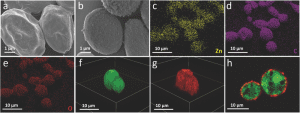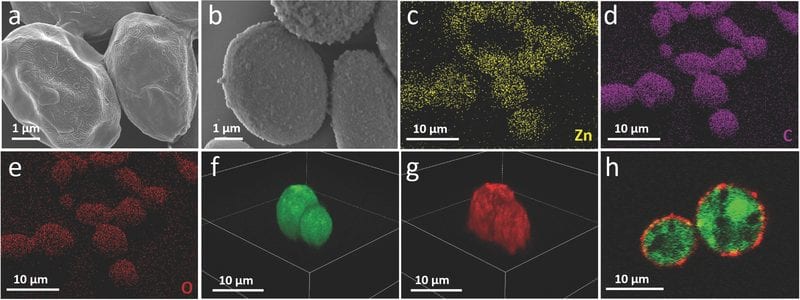In a recent Advanced Materials communication, K. Liang and co-workers demonstrated that a zeolitic imidazolate framework-8 (ZIF-8) acts as a size-selective, protective coating that preserves the cell life of Saccharomyces cerevisiae (baker’s yeast) and Micrococcus luteus in the presence of cytotoxic and antifungal agents. Yeast cells were homogenously coated with ZIF-8 by crystallization on the cell surface, where the ZIF-8 coated cells were selectively permeable to glucose, an essential nutrient for the cell. When subjected to the enzyme lyticase, which catalyzes cell lysis, only 5.3% and 19% loss in the fluorescence emission was observed (after 3 and 24 hours, respectively). On the other hand, the naked yeast cells exhibited a 95% reduction in fluorescence after 3 hours. Similarly, in the presence of filipin, an antifungal drug, less than 10% of ZIF-8 coated cells were destroyed after a 24-hour incubation period. In contrast, nearly 100% cell death occurred for the naked yeast.

The authors also performed optical density measurements at 600 nm (OD600) to determine the stage of cell proliferation. They found that naked yeast cells were initially dormant for 6 hours prior to proliferation, while the ZIF-8 coated yeast cells did not proliferate even after 6 hours, instead remaining in a hibernation state. This suggests that the ZIF-8 shell prolongs cell life by physically suppressing the budding phase. To test the possibility of “switching off” this prolonged dormant state, ZIF-8 coated cells were subjected to EDTA, which is known to degrade ZIF-8 films. Cell division occurred nearly instantaneously following the addition of EDTA, with OD600 data indicating a growth rate and final cell number similar to naked yeast and suggesting that the ZIF-8 coating does not adversely affect the activity of yeast cells. This type of behavior is analogous to unicellular organisms that have the ability to construct and dissolve their own protective external coating in response to the onset and disappearance of stressful environmental conditions.
Cells bearing a protective coating, such as silica, graphene, and polydopamine have been used in applications such as cell therapy, diagnostics, drug screening, and the food industry. Liang et al. present the first example of a metal–organic framework (MOF) as a coating for living cells.

















